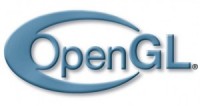Wasting no time on the opening day of Siggraph, the industry consortium is also opening up two working groups to increased participation.
 The Khronos Group today used the platform of Siggraph Vancouver opening day to announce an update to its industry standard OpenGL specification for cross-platform 3D graphics. The industry consortium is also opening up two of its working groups for expanded industry participation.
The Khronos Group today used the platform of Siggraph Vancouver opening day to announce an update to its industry standard OpenGL specification for cross-platform 3D graphics. The industry consortium is also opening up two of its working groups for expanded industry participation.
OpenGL 4.2 integrates considerable developer feedback, continuing the rapid evolution of this royalty-free specification. The update maintains full backwards compatibility, enabling applications to incrementally use new features, while accessing new features.
New functionality in the OpenGL 4.2 specification includes:
- Enabling shaders with atomic counters and load/store/atomic read-modify-write operations to a single level of a texture. These capabilities can be combined, for example, to maintain a counter at each pixel in a buffer object for single-rendering-pass order-independent transparency;
- Capturing GPU-tessellated geometry and drawing multiple instances of the result of a transform feedback to enable complex objects to be efficiently repositioned and replicated;
- Modifying an arbitrary subset of a compressed texture, without having to re-download the whole texture to the GPU for significant performance improvements;
- Packing multiple 8 and 16 bit values into a single 32-bit value for efficient shader processing with significantly reduced memory storage and bandwidth, especially useful when transferring data between shader stages.
Nvidia is among the large number of vendors who support OpenGL, and today announced they have released OpenGL 4.2-compliant production drivers for Nvidia GPUs.
Two working groups open doors wider
The Khronos Group also used the forum of SIGGRAPH to announce that two of its newer working groups— StreamInput and WebCL—are open for broader participation. StreamInput is defining a cross-platform API for advanced sensor processing and user interaction; WebCL is creating JavaScript bindings to OpenCL to enable heterogeneous parallel computing in HTML5 Web browsers.
Any interested company is welcome to join Khronos to make contributions, influence the direction of specifications and gain early access to draft standards before public release for any Khronos working group.





